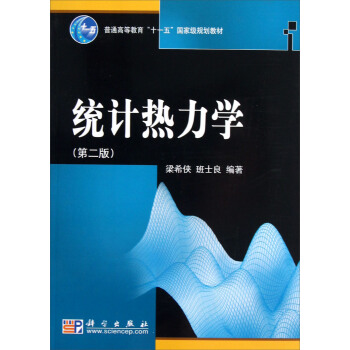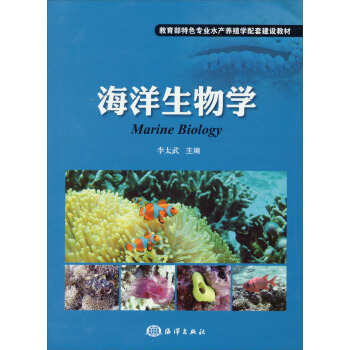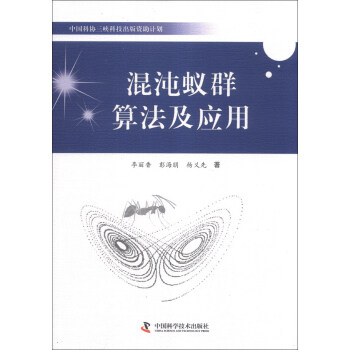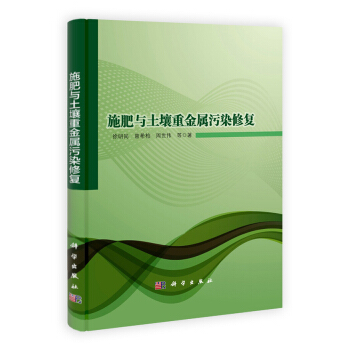![生物数学(第2卷·第3版) [Mathematical Biology]](https://pic.tinynews.org/11183576/rBEQWFE2sxIIAAAAAApYld9iGk0AABj1wMigI4AClit597.jpg)

具体描述
内容简介
《生物数学(第2卷·第3版)》近代生物数学方面的名著。第三版,在原来版本的基础上做了全面修订。近年来这个科目的茁壮成长和新知识点的不断涌现,新的版本将原来的一卷集分成上下两卷,扩大了知识容量,第二卷绝大多数是新增知识点。书中对生物学中的反应扩散方程和形态发生学的数学理论及最新研究成果作了全面介绍,是学习与研究生物数学的一部不可多得的参考书。内页插图
目录
CONTENTS,VOLUME ⅡPreface to the Third Edition
Preface to the First Edition
1.Multi-Species Waves and Practical Applications
1.1 Intuitive Expectations
1.2 Waves of Pursuit and Evasion in Predator-Prey Systems
1.3 Competition Model for the Spatial Spread of the Grey Squirrel in Britain
1.4 Spread of Genetically Engineered Organisms
1.5 Travelling Fronts in the Belousov-Zhabotinskii Reaction
1.6 Waves in Excitable Media
1.7 Travelling Wave Trains in Reaction Diffusion Systems with Oscillatory Kinetics
1.8 Spiral Waves
1.9 Spiral Wave Solutions of Reaction Diffusion Systems
Exercises
2.Spatial Pattern Formation with Reaction Diffusion Systems
2.1 Role of Pattern in Biology
2.2 Reaction Diffusion (Taring) Mechanisms
2.3 General Conditions for Diffusion-Driven Instability: Linear Stability Analysis and Evolution of Spatial Pattern
2.4 Detailed Analysis of Pattern Initiation in a Reaction Diffusion Mechanism
2.5 Dispersion Relation luring Space,Scale and Geometry Effects in Pattern Formation Models
2.6 Mode Selection and the Dispersion Relation
2.7 Pattern Generation with Single-Species Models: Spatial Heterogeneity with the Spruce Budworm Model
2.8 Spatial Patterns in Scalar Population Interaction Diffusion
Equations with Convection: Ecological Control Strategies
2.9 Nonexistence of Spatial Patterns in Reaction Diffusion Systems: General and Particular Results
Exercises
3.Animal Coat Patterns and Other Practical Applications of Reaction Diffusion Mechanisms
3.1 Mammalian Coat Patterns——How the Leopard Got Its Spots
3.2 Teratologies: Examples of Animal Coat Pattern Abnormalities
3.3 A Pattern Formation Mechanism for Butterfly Wing Patterns
3.4 Modelling Hair Patterns in a Whorl in Acetabularia
4.Pattern Formation on Growing Domains: Alligators and Snakes
4.1 Stripe Pattern Formation in the Alligator: Experiments
4.2 Modelling Concepts: Determining the Time of Stripe Formation
4.3 Stripes and Shadow Stripes on the Alligator
4.4 Spatial Patterning of Teeth Primordia in the Alligator: Background and Relevance
4.5 Biology of Tooth Initiation
4.6 Modelling Tooth Primordium Initiation: Background
4.7 Model Mechanism for Alligator Teeth Patterning
4.8 Results and Comparison with Experimental Data
4.9 Prediction Experiments
4.10 Concluding Remarks on Alligator Tooth Spatial Patterning
4.11 Pigmentation Pattern Formation on Snakes
4.12 Cell-Chemotaxis Model Mechanism
4.13 Simple and Complex Snake Pattern Elements
4.14 Propagating Pattern Generation with the Cell-Chemotaxis System
5.Bacterial Patterns and Chemotaxis
5.1 Background and Experimental Results
5.2 Model Mechanism for E coil in the Semi-Solid Experiments
5.3 Liquid Phase Model: Intuitive Analysis of Pattern Formation
5.4 Interpretation of the Analytical Results and Numerical Solutions
5.5 Semi-Solid Phase Model Mechanism for S typhimurium
5.6 Linear Analysis of the Basic Semi-Solid Model
5.7 Brief Outline and Results of the Nonlinear Analysis
5.8 Simulation Results,Parameter Spaces and Basic Patterns
5.9 Numerical Results with Initial Conditions from the~Experiments
5.10 Swarm Ring Patterns with the Semi-Solid Phase Model Mechanism
5.11 Branching Patterns in Bacillus subtilis
6.Mechanical Theory for Generating Pattern and Form in Development
6.1 Introduction,Motivation and Background Biology
6.2 Mechanical Model for Mesenchymal Morphogenesis
6.3 Linear Analysis,Dispersion Relation and Pattern Formation Potential
6.4 Simple Mechanical Models Which Generate Spatial Patterns with Complex Dispersion Relations
6.5 Periodic Patterns of Feather Germs
6.6 Cartilage Condensations in Limb Morphogenesis and Morphogenetic Rules
6.7 Embryonic Fingerprint Formation
6.8 Mechanochemical Model for the Epidermis
6.9 Formation of Microvilli
6.10 Complex Pattern Formation and Tissue Interaction Models
Exercises
7.Evolution,Morphogenetic Laws,Developmental Constraints and Teratologies
8.A Mechanical Theory of Vascular Network Formation
9.Epidermal Wound Healing
10.Dermal Wound Healing
11.Growth and Control of Brain Tumours
12.Neural Models of Pattern Formation
13.Geographic Spread and Control of Epidemics
14.Wolf Territoriality,Wolf-Deer Interaction and Survival
Appendix
A General Results for the Laplacian Operator in Bounded Domains
Bibliography
Index
前言/序言
用户评价
对于希望在生物学研究中引入定量分析方法的学者而言,《生物数学(第2卷·第3版)》无疑是一本极具参考价值的工具书。我惊喜地发现,本书在数学方法的选择上,兼顾了经典与前沿,既有稳固的理论基础,又不乏对新兴数学工具在生物学应用的可能性探索。作者在处理复杂的生物学系统时,展现出了一种“化繁为简”的能力,能够精准地捕捉问题的关键,并将其转化为数学语言。我个人非常喜欢书中对模型验证和参数估计部分的讨论,这部分内容对于确保模型的可靠性和解释力至关重要。此外,书中还包含了一些关于数据分析和可视化方法的介绍,这对于实际的研究工作来说,提供了宝贵的指导。总的来说,这本书不仅能够帮助读者掌握生物数学的理论知识,更能培养其将数学思想应用于实际生物学研究的能力,是一本不可多得的“实战宝典”。
评分《生物数学(第2卷·第3版)》这本书给我的最大感受是其“启发性”和“前瞻性”。它不仅仅是关于“是什么”,更多的是关于“如何思考”和“如何发展”。我注意到书中并没有局限于介绍现有的成熟模型,而是经常引导读者思考模型的局限性,以及在新的生物学发现出现时,如何对现有模型进行修正和拓展。这一点对于培养创新性思维至关重要。我发现作者在论述一些前沿的研究方向时,能够清晰地指出其中的挑战和未来的研究潜力,这让我对生物数学领域的未来发展充满了期待。虽然书中涉及的数学内容不少,但作者始终保持着一种“服务于生物学”的视角,数学工具的引入和讨论,都是为了更好地理解和解决生物学问题。这种务实的研究态度,使得本书的学术价值和应用价值都得到了充分的体现。
评分《生物数学(第2卷·第3版)》给我的整体感觉是一种“厚重”和“系统”。这本书并非浅尝辄止的科普读物,而是致力于构建一个完整、严谨的生物数学知识体系。我尤其欣赏作者在构建这个体系时所展现出的宏观视野和微观细节的兼顾。它不像一些书籍那样专注于某个单一的模型或方法,而是从更广泛的视角出发,将生物数学的各个分支有机地联系起来。我注意到书中对一些经典模型的演进过程进行了深入的梳理,从最初的简单假设到后来不断完善的复杂模型,这让我能够更清晰地理解这些模型背后的科学发展脉络。另外,书中对数学工具的选择和应用也有独到的见解,很多时候,作者会解释为什么在这种生物学问题中,选择某种数学方法比其他方法更合适,这对于提升读者的建模思维和问题解决能力非常有帮助。虽然内容量相当可观,但作者的组织方式清晰明了,章节之间的过渡自然流畅,使得阅读体验不至于过于枯燥。
评分这本《生物数学(第2卷·第3版)》着实是一本让人眼前一亮的学术专著。翻开它的第一页,我就被作者严谨而又富有逻辑性的叙述风格深深吸引。书中的概念引入循序渐进,从最基础的数学原理出发,逐步过渡到生物学中的复杂模型,使得即使是对生物数学领域不太熟悉的读者,也能比较轻松地跟上思路。尤其让我印象深刻的是,作者在解释一些抽象的数学概念时,并没有仅仅停留在公式的推导上,而是结合了大量的生物学实例,将数学语言转化为生动的生物学图景。例如,在讨论种群动态模型时,书中不仅给出了Lotka-Volterra方程的详细推导,还分析了不同参数组合下所代表的生态学意义,比如捕食者与猎物的此消彼长,以及一些微妙的平衡点状态。这种“数学+生物”的融合,让我看到了数学在理解和预测生命现象方面的强大力量,也激发了我进一步探索的兴趣。总而言之,这是一本具有高度学术价值和启发性的著作,对于希望深入了解生物数学的研究者和学生来说,绝对是不可多得的参考书。
评分作为一名对计算生物学领域充满好奇的跨学科学习者,我被《生物数学(第2卷·第3版)》中展现出的数学在生命科学中的广泛应用深深打动。这本书仿佛一座桥梁,将看似遥远的数学世界与鲜活的生物现象巧妙地连接起来。我特别赞赏作者在阐释复杂的生物过程时,能够精准地提炼出其核心的数学结构,并用清晰的数学语言加以描述。举例来说,在介绍一些关于细胞信号转导或基因调控网络的模型时,书中不仅仅是罗列方程,更重要的是解读了这些方程在描述生物功能方面的深层含义。作者似乎有着一种独特的魔力,能够将抽象的数学概念转化为易于理解的生物学机制,让读者在不知不觉中掌握复杂的研究方法。阅读此书的过程,就像是在进行一场精彩的智力探险,每解决一个数学问题,就仿佛揭开了一层生物学的奥秘。
评分上述各种生物数学方法的应用,对生物学产生重大影响。20世纪50年代以来,生物学突飞猛进地发展,多种学科向生物学渗透,从不同角度展现生命物质运动的矛盾,数学以定量的形式把这些矛盾的实质体现出来。从而能够使用数学工具进行分析;能够输入电脑进行精确的运算;还能把来自各方面的因素联系在一起,通过综合分析阐明生命活动的机制。生物数学在农业、林业、医学、环境科学、社会科学和人口控制等方面的应用,已经成为人类从事生产实践的手段。
评分好
评分学习学习
评分很好的经典书,本册主要是研究的PDE模型的。印刷质量也还不错。
评分书很好,印刷清晰,适合做生物数学的研究生,博士生,教研员等收藏拜读。描述生命现象的离散模型有两态和多态之分。马尔科夫链和莱斯利模型都属于多态;两态的模型应生物学的二元表现状态而产生。如神经兴奋沿着神经细胞的轴突,经过突触在阀的控制下传给另一个神经细胞,兴奋波的通过与否就是一个二元表现状态。1943年W.S.麦卡洛克和W.皮茨在布尔代数的基础上,首次给出描述神经传递现象的离散模型。此模型不断改进,并借助电脑加以实现,已做到模拟许多较复杂的神经功能,成为探索人类大脑思维奥秘的一个重要手段(见人工智能)。
评分很好的经典书,本册主要是研究的PDE模型的。印刷质量也还不错。
评分内容比较全面,可以读
评分还没看,先给个好评吧。物流也快。好评。
评分60年代末,法国数学家R.托姆从拓扑学提出一种几何模型,能够描绘多维不连续现象,他的理论称为突变论。
相关图书
本站所有内容均为互联网搜索引擎提供的公开搜索信息,本站不存储任何数据与内容,任何内容与数据均与本站无关,如有需要请联系相关搜索引擎包括但不限于百度,google,bing,sogou 等
© 2025 book.tinynews.org All Rights Reserved. 静思书屋 版权所有




![水论丛:湖泊与池塘生物学(第2版) [The Biology of Lakes and Ponds (Second Edition)] pdf epub mobi 电子书 下载](https://pic.tinynews.org/11218181/572fe622Ne5d94510.jpg)



![多尺度耗散机制与分级表面:摩擦、超疏水性与仿生(影印版) [Multiscale Dissipative Mechanisms and Hierarchical Surfaces: Friction, Superhydrophobicity, and Biomimetics] pdf epub mobi 电子书 下载](https://pic.tinynews.org/11300132/rBEhWlIUU-wIAAAAAAL_7aVRjB0AACR6ACike0AAwAF531.jpg)






![软界面:1994年狄拉克纪念讲演录 [Soft Interfaces the 1994 Dirac Memorial Lecture] pdf epub mobi 电子书 下载](https://pic.tinynews.org/11402078/564150e1N7e33382e.jpg)
![大学物理学(上册) [University Physics (Volume I)] pdf epub mobi 电子书 下载](https://pic.tinynews.org/11404521/563c1aa0Na9c56009.jpg)



